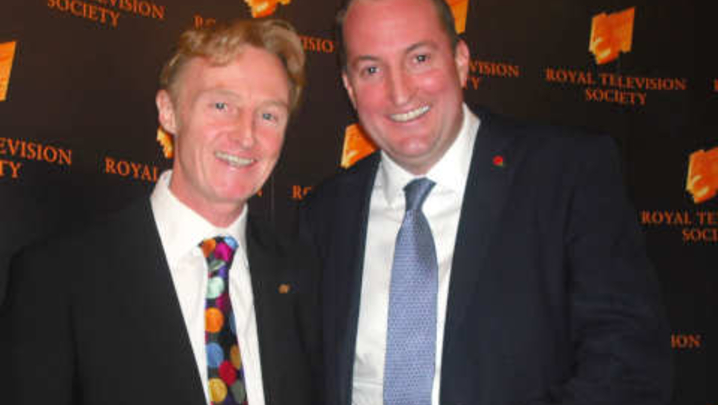Three leading telly creatives discussed the art of the promo, revealing what it takes to entice viewers to the screen, at an RTS London event that drew a capacity crowd of 100-plus to ITV Studios in early March.
To demonstrate how far today’s sophisticated promo has come, the continuity announcer and TV presenter Gavin Inskip, who chaired the event, showed a BBC One trailer from an October Saturday in 1980. This featured nothing more than clips from the coming night’s schedule, which included shows featuring Larry Grayson, Paul Daniels and Michael Parkinson.
In contrast, Channel 4’s three-minute promo for the Rio Paralympics last year, which was one of a number of clips shown at the event, featured a big band, dancers and hundreds of athletes, all of whom had a disability.
“That’s an extraordinary film, which sets a benchmark for what promos can be when there’s money, ambition and time,” said Matt Berry, group business director of Channel 4’s in-house agency, 4Creative.
“That film did a great job of lionising the Paralympics and people with disability, but we also had a hard selling job to do, which was, ‘Watch the Paralympics,’” continued Berry.
Channel 4’s promo for the latest series of its winter sports programme, The Jump, sent up the celebrities competitors. It is a far more modest endeavour, but no less creative or effective. “The Jump is as close to ITV as we get on Channel 4,” said Berry, “in terms of super-mainstream entertainment.”
The promo shows the programme’s contestants flying above snow-capped mountains, without wings. When an owl tells them that human flight is “aerodynamically impossible”, they crash to earth. “The truth is people watch the show because they like to see celebrities taking a hit,” continued Berry, “so the proposition on this [promo] was that pride comes before a fall.”
Alex Mathieson, creative director of ITV2, ITV4 and ITVBe, brought promos for dating reality show Love Island and US cartoon Family Guy to the RTS London event.
The aim for the former was to “build on the gamesmanship and rivalries” that are a big part of the show. Filmed on a beach in South Africa, the promo shows would-be contestants resorting to cheating as they race across a beach to claim their place on the programme.
The promo for Family Guy, which had been a BBC Three programme, had a simple aim. “Everyone knows what Family Guy is, so it was about hammering home that it’s on ITV2 now,” explained Mathieson. “We wanted that show all over our brand.”
Scott Russell, UKTV creative director, showed a couple of “brand spots”, designed to promote its factual channel, Really, as the home of serious storytelling.
Both featured women talking straight to camera and telling harrowing but ultimately uplifting stories: the first featured a women kidnapped by serial killers Fred and Rosemary West; the second, a transgender beauty contestant. “Emotion is your most powerful tool,” argued Russell.
Russell also showed a promo for Dave political satire show Unspun with Matt Forde, which featured a series of “politician lookalikes” including Donald Trump, Theresa May and Jeremy Corbyn.
Promo-makers, of course, do not have total creative freedom – the channel, the production company and the talent in the show all have a say too. “It’s their baby so you’ve got to be respectful,” explained Russell.
And, not all jobs are as attractive as the ones showcased at the RTS London event. “The worst brief,” reckoned Mathieson, is making a promo for “the seventh or eight series – and there’s no budget.”
The RTS London event, “Building a buzz: what makes a good promo”, was held at ITV Studios in central London on 8 March. Phil Barnes was the producer.









